 Go to summary
Go to summary
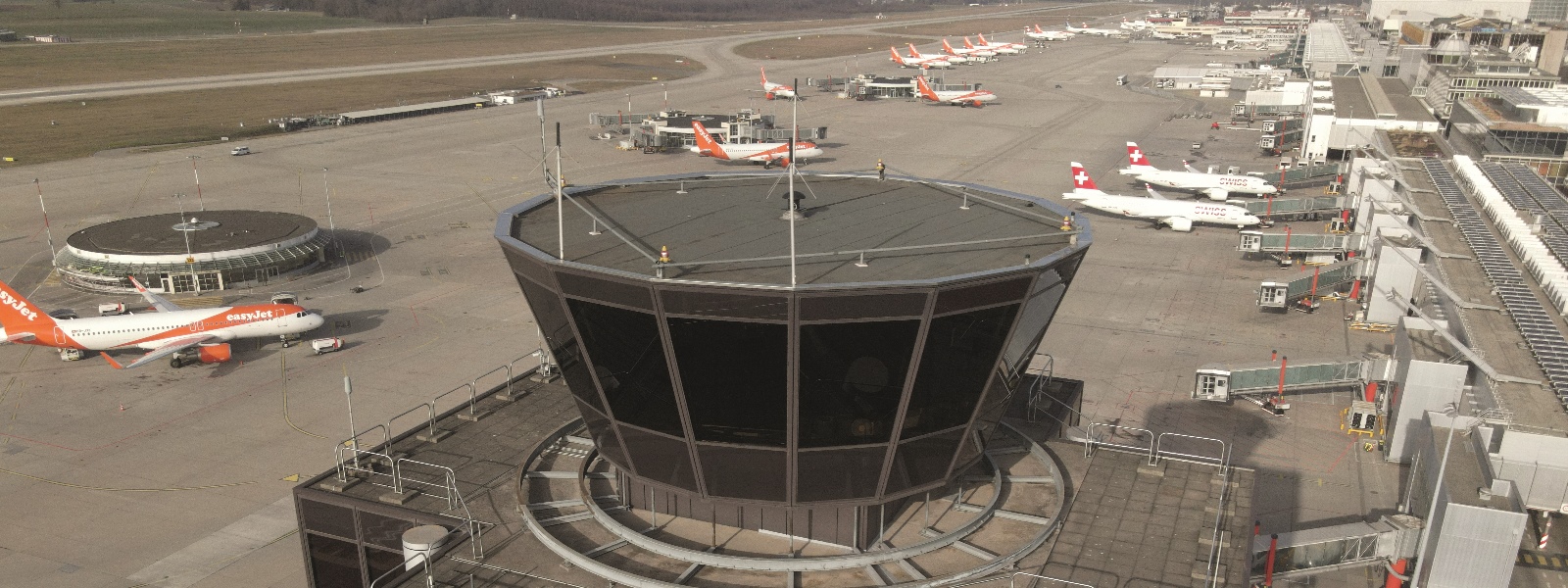
Strategic objectives maintained despite the crisis
Health restrictions, drastic drop in passenger numbers, hopes of a recovery : Genève Aéroport is, for the second consecutive year, severely affected by the COVID-19 epidemic. The General Management has maintained its strategic objectives and made progress on essential projects for the airport’s sustainability. At the same time, it had to reorganise the structure of the company and make difficult decisions about downsizing and postponing programmes.
Strategic investments
The pandemic that started in March 2020 had and still has a very significant impact on the work in progress and the investments of Genève Aéroport. Since the start of the crisis, the Airport has been regularly reviewing all its projects from a budgetary and strategic point of view. With one objective: to maintain essential programmes without jeopardising its financial situation. As a result, some projects were once again put on hold, postponed or even abandoned this year.
In 2021, 75 projects were carried out, for an investment of some 111 million CHF. The East Wing project and the Baggage Logistics Centre (BLC) accounted for almost 90% of investments. Nearly 120 projects planned have been frozen, allowing a reduction in investments of 90 million CHF for the years 2021 and 2022 and 200 million CHF for the years 2023 to 2024.
The East Wing takes off
Among the projects completed in 2021 is the construction of the East Wing. It embodies the most spectacular achievement of work undertaken over a decade at Genève Aéroport. The East Wing aims to improve the passenger reception from continental and intercontinental flights, whilst meeting current standards. It replaces the wide-body pavilion, built on a temporary basis in 1975. This audacious parallelepipedic design has impressive dimensions: with an inclination of 26 degrees towards the tarmac, it measures 520 metres long by 20 meters wide.
Ten years of study and work were necessary. Above all, its construction has been a major technical challenge with tarmac on one side, buildings very close by on the other as well as height restrictions associated with the air traffic limit. Needless to say that the area available for this new building was extremely limited.
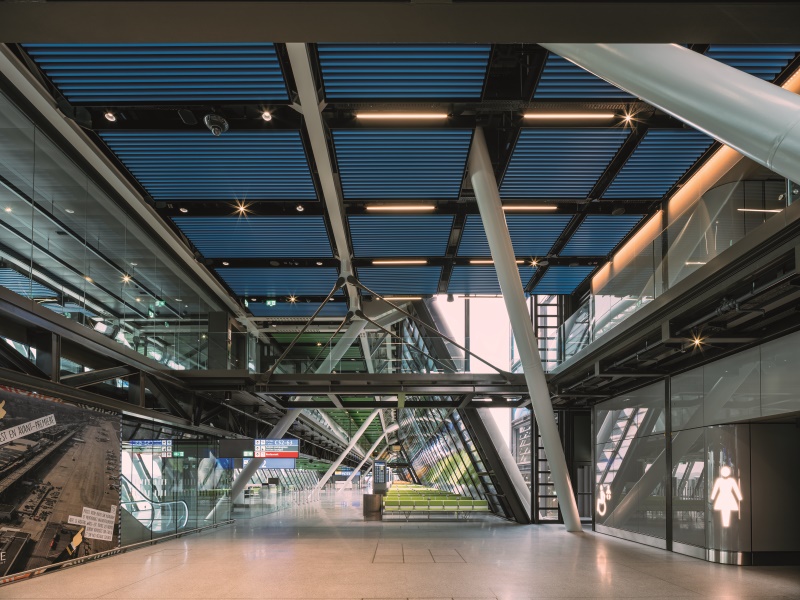
New technologies
The East Wing incorporates innovative equipment essential for intercontinental connectivity in Geneva. A system for managing the openings and closings of all boarding and disembarking gates has therefore been deployed.
Designed and developed in-house, the Gate Access System improves passenger flows as well as proper application of security procedures. A new automatic announcement system has also been deployed in the East Wing. Since the commissioning of the building, the Arabic language has already been added to the system. It allows a better understanding of the messages and marks the first stage of transition towards a « Silent airport » environment.
State-of-the-art technologies integrated into the building also make it possible to significantly improve the energy balance of the airport. With its 110 geothermal probes, 7,000 m2 of photovoltaic panels on the roof and 10,600 m2 of high-performance. triple-glazed facades, the East Wing is energy neutral. In addition, its connection to the GeniLac sustainable thermal network is planned for 2024.
Test run with volunteers
Before its official commissioning, two passenger experience tests, called ORAT (Operational Readiness Airport Transfer) tests, were organised in November and December. The objective of this essential step was to prepare all airport entities for D-Day and identify any malfunctions.
More than 700 volunteers acted as extras. It was the very first time that Genève Aéroport had tested one of its buildings with so many external participants!
A challenge all the greater as it was carried out in times of health crisis. The cost of the East Wing sector - which amounts to 610 million CHF - includes the East Wing building, the customs road, the construction and demolition of the GP+ (for wide-body aircraft), the INAD North (for those not allowed on Swiss territory) as well GeniLac’s preparations.
On 14 December 2021, the East Wing was put into service on the occasion of a SWISS Geneva - New York flight. Due to sanitary conditions, its official inauguration has been postponed to spring 2022.
Live
East Wing Opening (french)
Baggage sorting is progressing
Work on the new Baggage Logistics Centre (BLC) continued in 2021. The purpose of this new facility is to replace the current sorting system (due to the obsolescence of several pieces of equipment), to meet the increased needs for baggage handling and to meet security standards with the installation of latest-generation scanners (EDS3) before 1st September 2023, the deadline set by European regulations.
This particularly complex project was delayed for one year due to the pandemic. However, the structure is now almost complete, half of the « Arrival » baggage delivery belts are completed. Some of the new checkin counters in the main terminal are in place and 20% of the baggage transfer belts have been completed. Finally, the 8 bagage X-Ray scanners are in place with the first operations scheduled for the summer of 2022. The new Baggage Logistics Centre will be completed in 2024.
The arrival of GeniLac is taking shape
Another project that is continuing to progress is the connection of the airport to the GeniLac sustainable thermal network. Following the partnership agreement signed in November 2019 between Genève Aéroport and Services Industriels de Genève (SIG), the airport received approval of the plans for the East thermal power plant on 22 December 2021. Work on the first on-site GeniLac infrastructure can therefore be launched in 2022.
This is an essential project for Genève Aéroport, which has undertaken to supply all of its infrastructures with 100% renewable energy by 2026. The connection to the GeniLac sustainable network will enable it to heat and cool its buildings with water from Lake Geneva from 2024.
Genève Aéroport will therefore reduce its own greenhouse gas emissions by 60% and contribute to the cantonal effort for energy transition.
Genilac
Replacing fossil fuels (french)
A terrace for the people of Geneva
Another important and emblematic achievement completed in 2021: the construction of the « Terrace Panorama ». This new public terrace was originally supposed to crown Genève Aéroport’s centenary festivities in September 2020, but health restrictions had postponed its opening for a year. It finally opened its doors to the public on 24 June, and was inaugurated in September.
Built on the roof of the Le Chef restaurant, on the 4th floor of terminal 1, the « Terrace Panorama » offers a 180° view of the tarmac, with the Jura range as a backdrop. Spotters can observe the runway from end to end! Access to this 800 m2 observation area is gained after going through a specific security checkpoint, via a suspended walkway. On site, a refreshments bar offers snacks and beverages. Visitors also have access to a projection room in which films about the airport and its history are shown.
"Terrace Panorama"
Inauguration (french)
CAP 2030 well underway
The year 2021 was marked by the approval on 29 June 2021, by the Board of Directors of Genève Aéroport, of the study credit for the CAP 2030 and Multimodal Platform projects. This essential step has made it possible to truly launch these two projects, which consist of a major transformation of the airport over the next ten years.
The main Terminal, built in 1968, will be over 70 years old in 2040. It will present major problems of dilapidation affecting the safety of the buildings, the reception of passengers and its operational capacity. A major renovation is therefore necessary by then.
The CAP 2030 project involves creating a new 45,000 m2 terminal, on the esplanade in front of the main entrance to Terminal 1. Genève Aéroport must remain operational throughout the duration of the works, a large part of the activities of the current terminal will be transferred to the new building.
It will then be possible to renovate the T1 in depth, or to demolish it to rebuild it. The option remains open. This project will only be feasible after the creation of a multimodal platform on the upper part of the CFF station.
«The main Terminal will be over 70 years old in 2040. A major renovation is therefore necessary by then.»
In 2020, Genève Aéroport had signed a Convention of Intent with CFF to draw its outlines. The project involves in particular the demolition of the superstructure of the existing station, which will be replaced by a public transport exchange platform to ensure an ambitious transfer of modal share.
These two strategic projects represent an investment of 560 million CHF for Genève Aéroport. After the designer-builder selection phase and the study phase, the work is scheduled for 2025 for the multimodal platform and will last three years. The extension of the terminal should start in 2028 and end in 2032.
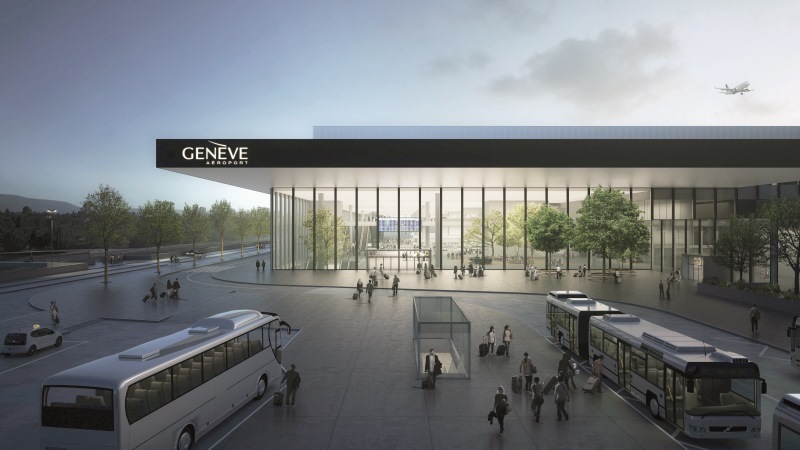
Renovation of the French sector
The renovation of the French sector, which began on 1 December 2020, continued until the beginning of 2022. A renovation plan for this area has been launched, with the aim of setting up a secondary customs checkpoint allowing the outsourcing in the international zone of certain flights for France depending on traffic peaks and the modernisation of check-in counters for passengers departing for France.
Operation management
The OPS management solution (POPS) came into operation in 2021. This information system provides a global view of all platform operations (from aircraft on the tarmac to passengers at the airport and baggage). The final objective is to simplify and optimise the steering of operations at the airport.
Airport passenger systems
Another achievement for 2021: the launch of the APS (Airport Passenger Systems) project. This programme aims in particular to renew the technological systems used to manage the passenger process at each stage, from check-in to boarding. Ultimately, it will also stimulate the development of self-service for passengers to enable them to carry out operations such as checking in and dropping off their baggage completely independently.
Deploying this solution is complicated, as it must be perfectly coordinated with other ongoing projects, such as the new Baggage Logistics Centre (BLC) and the deployment of new check-in counters (NCIS).
HUMAN Resources
Handling the crisis and preparing for the recovery
Following on from 2020, the Human Resources Department has assumed a guiding role in 2021 to support the executive management in its management of the human and financial impacts arising from the crisis. Significant and daily efforts have been made to ensure the protection of each and every one in relation to the health recommendations and mandatory working from home. The protection plan put in place to ensure the airport health safety for passengers, but also employees, has been updated several times. Thanks to this plan, Genève Aéroport obtained, on 7 October, the renewal of its Airport Health Accreditation (AHA) certification for one year.
Priority was given to monitoring the reduction in working time, following the number of positive COVID-19 cases as well as people in quarantine and regularly informing the staff of the evolution of the situation.
Staff reduction
In parallel, the Human Resources Department contributed to the management of the financial impact of the situation. Faced with a major budget crisis and an unprecedented decline in its activity, Genève Aéroport has been forced to reorganise its structure in 2021. After conducting a structural analysis of all the company’s departments, the General Management has taken the decision to reduce the workforce. 22 positions have been removed. The Human Resources Department has implemented this decision and supervised the implications involved for the persons concerned. It has also put in place accompanying measures, including the possibilities of internal and external redeployment opportunities.
The strong reduction in activity and the suspension of certain investments and projects required the use of furlough. The average level of short-time working reached 27.9% in 2021.
On the workforce side, fixed-term contracts have not been renewed and early retirement has been encouraged. Commitments and replacements following natural departures have been limited to the strict minimum.
The company’s workforce logically decreased from 1,041 FTE (fulltime equivalent) as of 31.12.2020 to 997.93 FTE as of 31.12.2021. On 31 March 2020, at the start of the crisis, the number of FTEs was 1,084.30. Since then, every new employment has been subject to prior validation by the Executive Management and internal recruitment has been given priority. Therefore, in 2021, 65% of the advertised positions were filled internally (this rate was 44.3% in 2020).
As for working from home, 19% of the hours worked in 2021 were carried out in « home office ». As a comparison, this rate was 16% in 2020. Before the pandemic, Genève Aéroport had prepared a flexible work-from-home pilot project for several days a week. Delayed because of the situation, this project named FlexiWork will be set up as soon as the end of mandatory teleworking will be decided.
«19% of the hours worked in 2021 were carried out in home office»
Maintaining the dialogue
To support employees who have been strongly affected by the situation, the external psychological support team put in place in 2020 was maintained during the first months of the year 2021. Two online exchange forums have also been set up for employees to share their experiences.
Whether in Genève Aéroport or platform companies, the health crisis has affected social relations. Management was therefore committed to maintaining dialogue and keeping the employees informed throughout the year. In total, four videoconferences with all staff were organised quarterly during which the Executive Management and the President of the Board of Directors were able to take stock of air traffic, the financial situation and the organisation of the airport.
A new communication channel has also emerged this year through flash polls, called « Pulse Surveys ». They make it possible to gauge the feelings of the employees through questions relating to various topics, including the experience of working from home, the progressive return to the airport, the effectiveness of the protection plan, the work organisation from the managers’ point of view. According to the responses collected, measures could be discussed and put in place. With a participation rate greater than half of the workforce in 2021, this means of communication has demonstrated its usefulness and will continue in order to regularly solicit employees.
Expected working practices and managerial skills
A new managerial training course was deployed within Genève Aéroport in 2021 through of a pilot project with the aim of ultimately benefiting each hierarchical manager. A tailor-made programme in partnership with the HEG-Genève has been set up to adapt the content to the culture, needs and expectations of the airport. With a view to contributing to the development of healthy working environments and a culture of responsibility and exemplarity, a Management chart, presenting the managerial skills expected in the company, has been drawn up.
Genève Aéroport has continued its efforts to update its system relating to ethics and conflicts of interest. The directive on preventing and managing conflicts of interest issued in 2018 was revised in 2020. In 2021, online training was rolled out to all employees.
A code of conduct outlining good practices in terms of behaviour within Genève Aéroport was also established and adopted in June 2021 by the Board of Directors. It was distributed to employees, and presentations were made live to departments during the year and will continue until spring 2022.

Equal pay, paternity and parental leave
An internal analysis of equal pay was carried out in March, as required by law for companies employing at least 100 people since 1 July 2020. It showed the difference in pay between men and women related to criterion of sex is less than 1%, the other criteria being equal. This result complies with the required legality set at 5%. The next salary analysis will take place in 2025.
Since 1 January 2021, male employees have also been entitled to two weeks of paternity leave. Parents of seriously ill children can benefit from specific leave, as can people supporting a family member who is not directly related due to illness or accident. The status of Genève Aéroport staff has therefore been updated in order to be in line with federal legislation.
Digitisation of Human Resources
This year, the Human Resources Department took a step further towards digitisation by choosing a new personnel data management tool. The SAP SuccessFactors platform will therefore facilitate the management and analysis of HR data.
A new absence management platform has also been selected. It will allow employees to declare their sickness or accident absences to insurance in a simple and efficient way.
Environment
sustainable development policy
An essential link in the national transport infrastructure, Genève Aéroport must sustainably meet the demand for present and future air mobility. To achieve this mission, the airport has been implementing an environmental policy that has been in place for several years. In May 2021, it formalised a sustainable development policy. It is therefore committed to providing users with efficient and sustainable infrastructure and services, to preserving the living environment and to strengthening its ties with the region. It acts as a responsible employer and implements responsible purchasing and partnerships.
Limit noise pollution for local residents
Aware of its urban character, Genève Aéroport takes measures to contain its impact in terms of noise pollution, particularly for local residents. Since 2003, it has deployed a soundproofing programme for homes in neighbouring municipalities. More than 4,000 homes have been soundproofed to an amount of 57 million CHF. Genève Aéroport will continue to work on the soundproofing of 3,000 additional housing units in the years to come.
Since the beginning of the COVID- 19 crisis, the programme has experienced a certain slowdown due in particular to shortages of raw materials, delivery delays or the impossibility of visiting the owners, some of whom are people deemed to be at risk. Some companies carrying out soundproofing work have also been forced to cease their activities due to the economic crisis.
Sound footprint
Aware of its urban character, Genève Aéroport takes measures to limit the noise pollution generated by its activity. This year 2021, marked by the pandemic, was exceptional due to the drop in air traffic. Logically, the noise impact linked to the operation of the airport has followed the same trend. The 2021 noise footprint has not yet been calculated. Between 2019 and 2020, the surface area of areas exposed to noise decreased by 21 km2. This situation is mainly linked to the overall decrease in aircraft movements (-53.6% in 2020), in particular after 22:00. (-71.7%).
As a reminder, Genève Aéroport has been pursuing a proactive policy for several years in order to contain the noise footprint of the platform. Hence, airlines are encouraged to operate the most modern aircraft (therefore less noisy), by means of fees collected at each landing, modulated according to the noise class of each aircraft. A specific fee for take-offs after 22:00 is also applied. Since nocturnal movements are the most sensitive from the point of view of local residents, their impact is considered to be ten times greater than daytime flights in the calculation of noise curves.
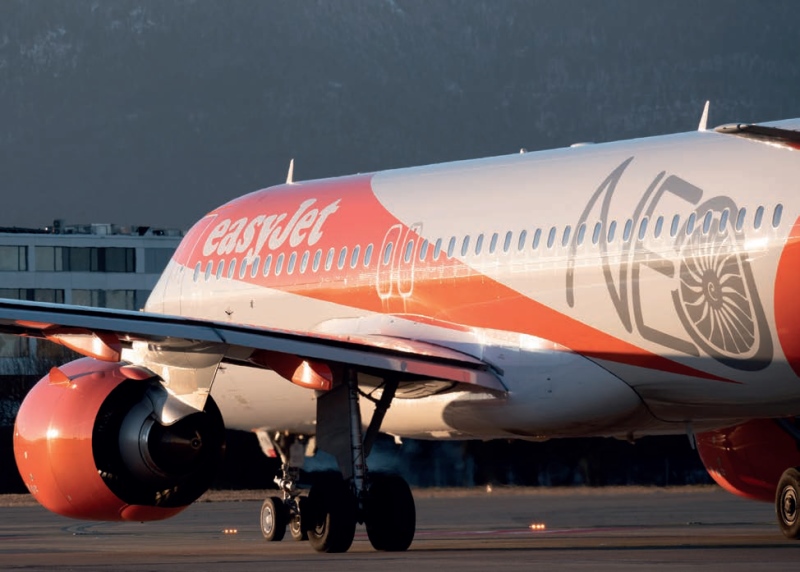
The airport’s Sectoral Aviation Infrastructure Plan (SAIP) sets the framework for the operation and future development of Genève Aéroport. In order to materialise the commitments made in this document, Genève Aéroport submitted in 2019 to the Federal Office of Civil Aviation (FOCA) an application for approval of plans and operational measures. The project includes operational measures allowing the platform to stabilise and then reduce its noise footprint. The municipalities, the authorities and the population took a stand on the project as part of the public inquiry. In 2021, Genève Aéroport provided responses to the positions taken and, at the end of the year, all the parties had the opportunity to submit their final observations. The file is now kept to be judged by the decision-making authority (FOCA).
In 2021, Genève Aéroport carried out its regular dialogue with the municipalities in order to take stock of the situation on subjects of interest to the inhabitants.
Promoting public transport and soft mobility
Genève Aéroport is implementing measures to continuously improve the quality of service and the experience of passengers. The accessibility of the platform by public transport is one of the main projects.
Since 2018, six Aérobus morning lines have served the platform free of charge from Geneva and neighbouring France. Due to the drop in passenger traffic, the offer has been temporarily reduced (12 routes instead of 20). In compensation, for airport employees who have continued to exercise their activity, the schedules of the airport staff shuttles have been adapted in order to offer the necessary service. Genève Aéroport has been financing free public transport tickets for travellers for more than 10 years. In 2021, 393,760 free tickets were distributed. By way of comparison, in 2019, more than 1,180,000 tickets were used by passengers, i.e. 3,250 tickets per day on average! Faced with the budgetary context, Genève Aéroport has had to temporarily suspend this service.
Genève Aéroport wishes to promote soft mobility on the platform. Since 2 December 2021, a VéloPartage station, accessible to all users and employees, has been set up at the Departure level. The idea is simple: the user can choose any available bicycle and leave with it, with no obligation to return. Likewise, they can go to the airport with a network bicycle and park it if the space allows it. A dedicated application from Donkey. Republic allows you to check the availability of the bicycles.
On the tarmac side, two new electric buses dedicated to passenger transport were received this year. Two additional buses are due to arrive in 2022. Eventually, the fleet will consist of 30 buses, 14 of which are electric. This strategy aims to limit vehicle emissions on the tarmac. Faced with the drop in passenger traffic, an electric bus was also temporarily transformed into an air-conditioned break room for employees working on the tarmac during periods of extreme summer temperatures.
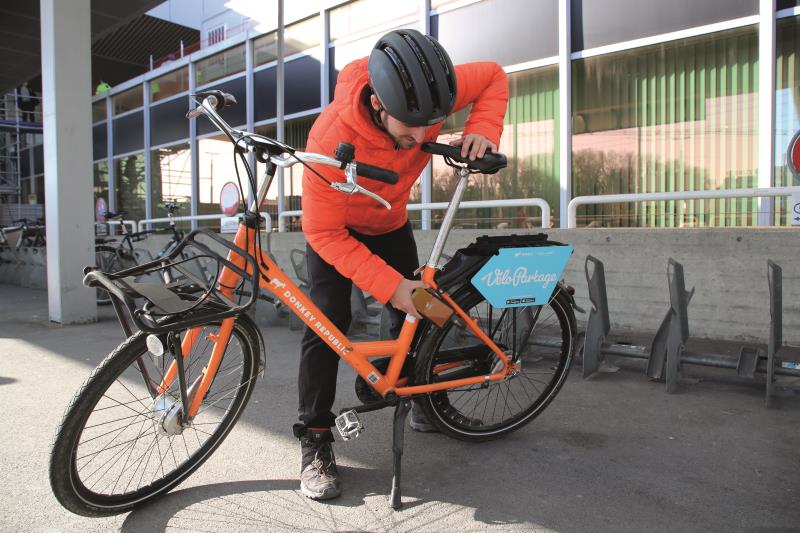
Reducing C02 emissions
Genève Aéroport participates in the reflections undertaken within the aviation sector in order to minimise its climate footprint. It therefore took part in the drafting of a joint declaration of intent by Swiss aviation stakeholders (Swiss, easyJet, Zurich and Basel airports, Swiss Business Aviation Association) in favour of a reduction of greenhouse gas emissions, net zero emissions, to the level of the objectives set for 2050.
This text is part of a study entitled « Road Map Sustainable Aviation » Switzerland, which defines the path and the means for Swiss aviation to align with the objectives of the Federal Council's climate strategy. Indeed, Switzerland is committed to significantly reducing CO2 emissions by 2030 and the Federal Council has also adopted the objective of net zero emissions by 2050.
Offsetting flight emissions
Still with this in mind, passengers have the possibility of offsetting the CO2 emissions of their flight thanks to a partnership with myclimate launched in June 2021. For each offset journey, Genève Aéroport invests an identical amount. The cost of the compensation was calculated according to the average distance of the short- and longhaul flights departing from Geneva, respectively 900 km and 4,300 km. It is also possible to offset previous flights.
Recycling of masks
In August 2021, bins for the collection and recycling of surgical and FFP2 masks were deployed throughout the platform. Once full, these bins are sent to a dedicated recycling centre. The masks, which are made of polypropylene (100% recyclable material), are then transformed into polypropylene granules. They then become a raw material that can be used to manufacture plastic objects, for example. In five months, nearly 7,000 masks have been collected.
Light pollution: raising awareness and taking action
For the second year, Genève Aéroport took part in the « La nuit est belle! » operation to raise public awareness on light pollution. The satellite, runway and tarmac lights were turned off the night of 21 May. Only the tarmac lighting masts remained on, for safety reasons. In addition, night work on the Genève Aéroport and Skyguide platform has been suspended for the occasion.

AN ACTIVE PLAYER IN HIS REGION
genève aéroport gateway for international geneva
The year 2021 was marked by an exceptional event: the diplomatic summit between Joe Biden and Vladimir Putin on 16 June. Genève Aéroport, chosen as the gateway for the presidents and the Russian and American delegations made up of several hundred people, is proud to have participated in the success of this important meeting for Switzerland and International Geneva. For nearly three weeks, a special unit bringing together several departments of Genève Aéroport and the international police worked on a daily basis to make this mission a success, in operational, logistical, security and protocol terms. The Protocol department’s expertise and commitment guaranteed the quality of reception of Genève Aéroport in such circumstances.
Biden - Putin
What you did NOT see on TV
Genève Aéroport also prepared the arrival of participants to the 12th Ministerial Conference of the World Trade Organization (WTO), which was to be held from 30 November to 3 December 2021 in Geneva. In particular, the Conference brought together nearly 4,000 people, including several heads of state and nearly 220 ministers.
The WTO cancelled the event three days before it was due to open, due to the appearance of the Omicron variant in South Africa. The preparations for this 12th Conference have led to particularly intense protocol activity on the platform. In 2021, the Protocol department carried out 1,335 formal receptions, including 44 heads of state, ten prime ministers and 218 members of royal families.
Interventions by professional firefighters and Aircraft Rescue and Firefighting paramedics
Genève Aéroport's Airport Rescue and Firefighting Department (SLIA) provides an operational response on the airport site 24 hours a day throughout the year, but may be called upon to intervene on cantonal territory at the request of the local emergency services (SIS), for example, during a major fire in Versoix in November 2021. The paramedics intervene throughout the canton, as well as in part of the canton of Vaud on direct request from 144.
In December 2021, the professional firefighters of Genève Aéroport also followed a two-week aquatic rescue training course in Marseille. The training to enable the firefighters to intervene on Lake Geneva in the event of water landing. The Aircraft Rescue and Firefighting department also strengthened the rescue system on the lake with its partners.
Sea Rescue
Our firemen train in Marseille (french)
Sponsorship and patronage: actions temporarily reduced
Genève Aéroport has had an active sponsorship policy at the local level since 2006, supporting numerous partnerships, in particular, in the cultural, sporting, humanitarian and aeronautical fields. In 2020, the Covid-19 pandemic had serious repercussions on this activity. The amounts allocated have been reduced to 700,000 CHF compared to 900,000 CHF in 2019. Faced with the difficult financial situation of Genève Aéroport in 2021, sponsorship activity was further reduced and 135,000 CHF were allocated this year.
Being aware of its social responsibility, Genève Aéroport has respected its sponsorship commitments for as long as possible. However, the partnerships that expired were not renewed. Genève Aéroport, which had been a partner of the Lions de Genève basketball club since its creation, sadly, had to end this adventure. On the other hand, it accompanied the club in its search for a new partner (SIG). The airport once again supported the 20 km de Genève by Genève Aéroport race as promised.
In accordance with directives to reduce expenditure within Genève Aéroport, no new commitment has been made. New forms of partnership have been found. At the request of the Montreux Jazz Festival and the Verbier Festival, Genève Aéroport has facilitated access to these infrastructures by making certain car parks available.
Once the recovery is underway, Genève Aéroport intends to relaunch its sponsorship policy in order to support different initiatives in the region.
Commited to the recovery of the aviation sector
Genève Aéroport is preparing for takeoff
Genève Aéroport endured 2021 with its fluctuating passenger traffic. These changes in the rhythm of activity following the introduction or removal of health measures required very fine operational adjustments and greater flexibility of services. Throughout the year, bimonthly planning meetings were organised to provide the necessary infrastructure for operations. During the quieter phases, particular emphasis was placed on maintaining ongoing training for employees in order to guarantee a level of operability at all times.
Genève Aéroport approached the federal authorities on several occasions to lobby in favour of simplified health systems in the field of travel. In April, it participated in the Back in the Air virtual summit with around 50 representatives from the aviation, economy and tourism sectors. At the end of this event, three requests were transmitted to the Federal Council in order to restore the freedom to travel.
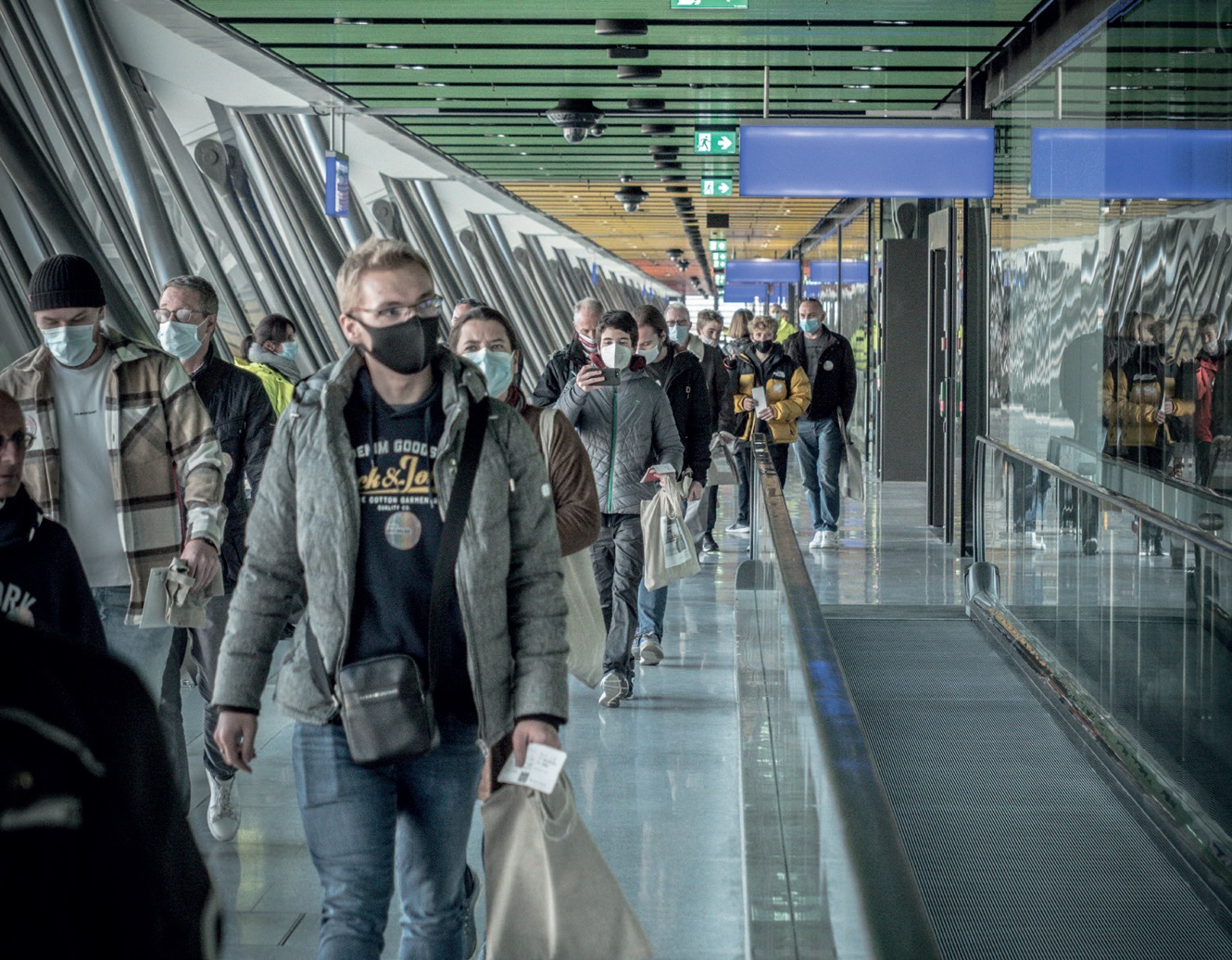
What is the future of aviation after-COVID-19 ?
Drastic drop in passengers, health restrictions : airports have been hit hard by the COVID-19 epidemic. Now, how do we look towards the future? And how to accelerate the exit from the pandemic? All these questions were extensively debated during the annual conference and General Meeting of the Airport Council International (ACI) Europe Region. This was held in October in the East Wing of Genève Aéroport, which organised the event. Particular emphasis was placed on ways to restore air connectivity and achieve a sustainable revitalisation of the sector.

